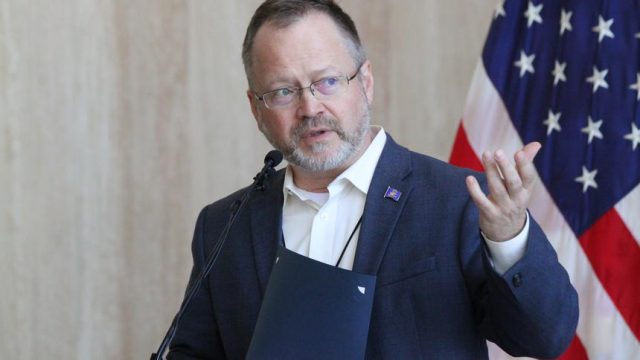The New Census Could Change North Dakota’s Political Landscape Thanks to Western Population Growth

This week Governor Doug Burgum issued an executive order creating an initiative, called the Complete Count Task Force, aimed at ensuring an accurate census count in North Dakota.
The national decennial population count is upon us, and it’s important for states like North Dakota to ensure accurate counts as the numbers will be used for all sorts of things from the apportionment of political representation to the appropriation of federal dollars.
It’s the latter that I’m interested in for this post. Not only does the U.S. Census set apportionment for the House of Representatives, but the numbers will be used for redrawing North Dakota’s political maps as well. Specifically, the census will be used to set the boundaries of legislative districts.
Things could get very interesting.
Let me illustrate what I’m talking about with a couple of maps.
The first is the county-by-county map of the 2018 U.S. Senate election between Republican Kevin Cramer (red) and Democrat Heidi Heitkamp (blue). I’m using this as a sort of red county/blue county comparison. The counties where Heitkamp won are where the heaviest concentrations of Democratic voters live:


Most of North Dakota’s population growth has taken place in the western part of the state. It’s worth remembering that North Dakota Democrats don’t hold a seat in the Legislature representing an area west of Bismarck. Western North Dakota is a deeply Republican area, and the population there is growing.
Meanwhile, in many of the Democratic/Heitkamp-voting areas of the state the population is shrinking.
To get more specific with the data, below is table ranking North Dakota’s top ten counties based on population growth (data from U.S. Census estimates):

You can see the full list below, but looking at this top ten you can see that eight of ten are western, Republican-leaning counties. Granted Cass County (Fargo) tops the list by a country mile, and that area is one of the few geographic strongholds Democrats have in the state, but the growth in the rest of the state could make things interesting when it comes time to redraw the state’s legislative districts.
Or not. These numbers I’m using are estimates. The actual census could end up being quite different. Also, the areas of the state where Democrats have strong support are so tiny, any redistricting fight may well end up pitting Republicans against other Republicans.
[scribd id=409163405 key=key-YA9CWNxrTLDUCZpRhjhC mode=scroll]




